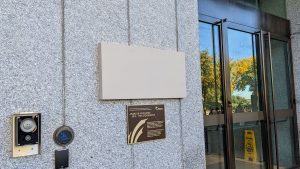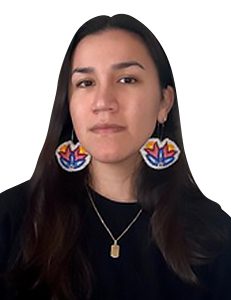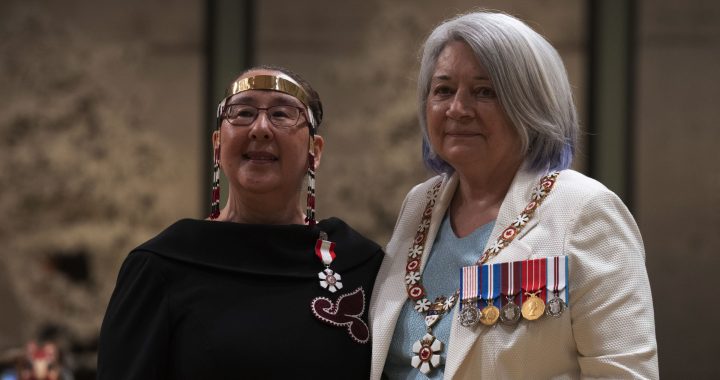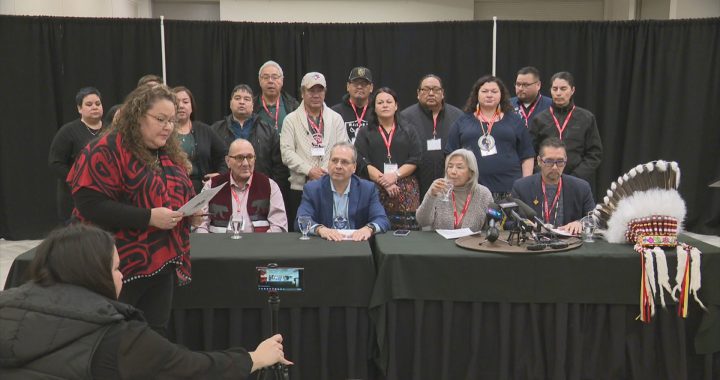
The National Capital Commission will vote to decide the new name of the Sir John A. Macdonald Parkway. Photo: APTN.
After years of advocacy, the name of a four-lane roadway that runs along the Ottawa River is a vote away from reflecting the land on which it stands.
In a letter sent to the chief of Kitigan Zibi Anishinabeg, Tobi Nussbaum, CEO of the National Capital Commission (NCC) says that members from the community and the Algonquins of the Pikwakanagan had reached a consensus.
Nussbaum says he will be reading the new name Kichi Zībī Mīkan to the NCC board of directors at their meeting on June 22.
The NCC is a federal Crown corporation that manages federal lands and owns properties in Ottawa and Gatineau, Que. Its portfolio includes commercial, residential and heritage buildings, like the official residences of the prime minister and governor-general. The land the parkway is situated on is NCC property.
“I am grateful for the generosity of the participants, who shared views, stories and cultural references about the area, highlighting the profound connection the Algonquin Anishinabeg maintain with the river and surroundings,” wrote Nussbaum.
“If approved by the Board, NCC staff will work with both Algonquin communities to plan an unveiling ceremony this Fall.”
In the Algonquin language, Kichi Zibi means great river and is the Algonquin name for what was later called the Ottawa River. Mikan means road or path.
Claudette Commanda, a Kitigan Zibi Elder and chancellor at the University of Ottawa, says the new name is more fitting for the roadway.
“That the best name for it because it speaks of that land, it speaks about the water, and it speaks about who we’re we are as Algonquin people,” says Commanda.
“The river is very important to us because that was those rivers were and continue to be our highways. So, I do like the name, and we are very pleased with that. It’s another reclamation.”
In the summer of 2021, three Ottawa city councillors issued a letter to Prime Minister Justin Trudeau calling on the federal government to rename the roadway. It was written following the discovery of what may be 215 unmarked graves at a former residential school site in Kamloops, B.C.
Read More:
NCC process of renaming Sir John A. Macdonald Parkway in Ottawa moving at ‘snails pace’
The roadway, which runs from downtown to a western suburb in the city, was originally called the Ottawa River Parkway until 2012, when John Baird, a cabinet minister with the former Conservative government, decided to change its name in recognition of Canada’s first prime minister.
Sir. John A. Macdonald authorized the creation of the residential school system in the late 1800s. An estimated 150,000 Indigenous children were forced to attend the government-funded, church-operated schools that operated for more than a century in Canada.
Hundreds of schools were opened in or near Indigenous communities aimed at removing “the Indian from the child” as a way to assimilate First Nations, Métis and Inuit children into Western society.
‘I don’t want to see his name anywhere’
“The John A. Macdonald building must have a change to that name. He was the author and auctioneer of genocide. I don’t want his name to be anywhere,” says Commanda.

Initially built as a bank, the building is located right across from Parliament Hill’s West Block and is used for large parliamentary meetings and functions. It was renamed the Sir John A. Macdonald Building in 2012.
“In Ottawa, National Capital Region, and across Canada. There should be markers, there should be places to honour and commemorate residential school survivors,” Commanda told APTN. “Day School survivors, all our people who are survivors of genocidal policies that have been inflicted upon our people.”
Albert Dumont, an Algonquin Elder has advocated for the removal of Macdonald’s name and welcomes the Algonquin name for the parkway.
“It was just our people didn’t name things or places after person,” says Dumont. There was a reason and I think our ancestors would agree that it was that that’s a good name for a way that runs parallel to the great river. So, I call it the great river roadway,” says Dumont.
“It was disturbing that every time I drive there, I’d see that sign with his name.”
Dumont led a walk to change it on Sept. 30, 2022, the National Day of Truth and Reconciliation and vowed to walk it each year until the name was removed. He wants to see more actions taken to tell the truth about Macdonald’s harmful policies.
“If they take his knighthood away, that would be good with me. People will say, ‘how come he’s not sir anymore?’ Then it will be told, it’s because thousands of children died because of him.”
The renaming of federal buildings is not unheard of in Ottawa. In 2017, the government renamed the Langevin Block building to the Office of the Prime Minister and Privy Council, after requests from the Assembly of First Nations and a group of Indigenous MPs.
Langevin is considered a Father of Confederation and was a prominent member of Macdonald’s cabinet. During his time as minister of public works, Langevin was one of the first architects of the residential school system.
The building sits across from Parliament Hill and held Langevin’s name since its opening in 1889.
According to Public Services and Procurement, the department responsible for federal properties, there have not been any “discussions about changing the name of the Sir John A. Macdonald Building.”
But on Sept. 30, 2022, the name was covered up for the day. The cover was removed soon after.











